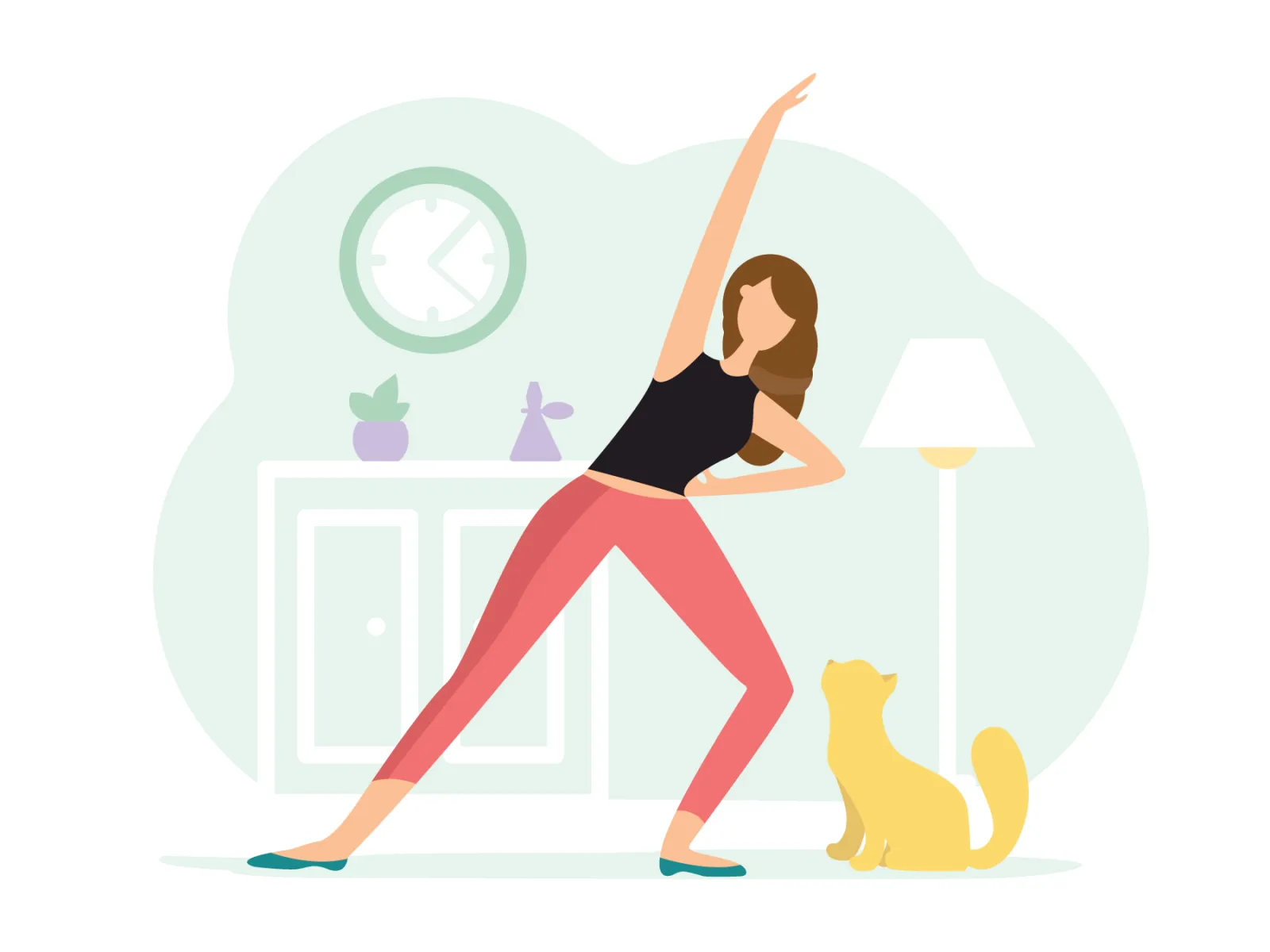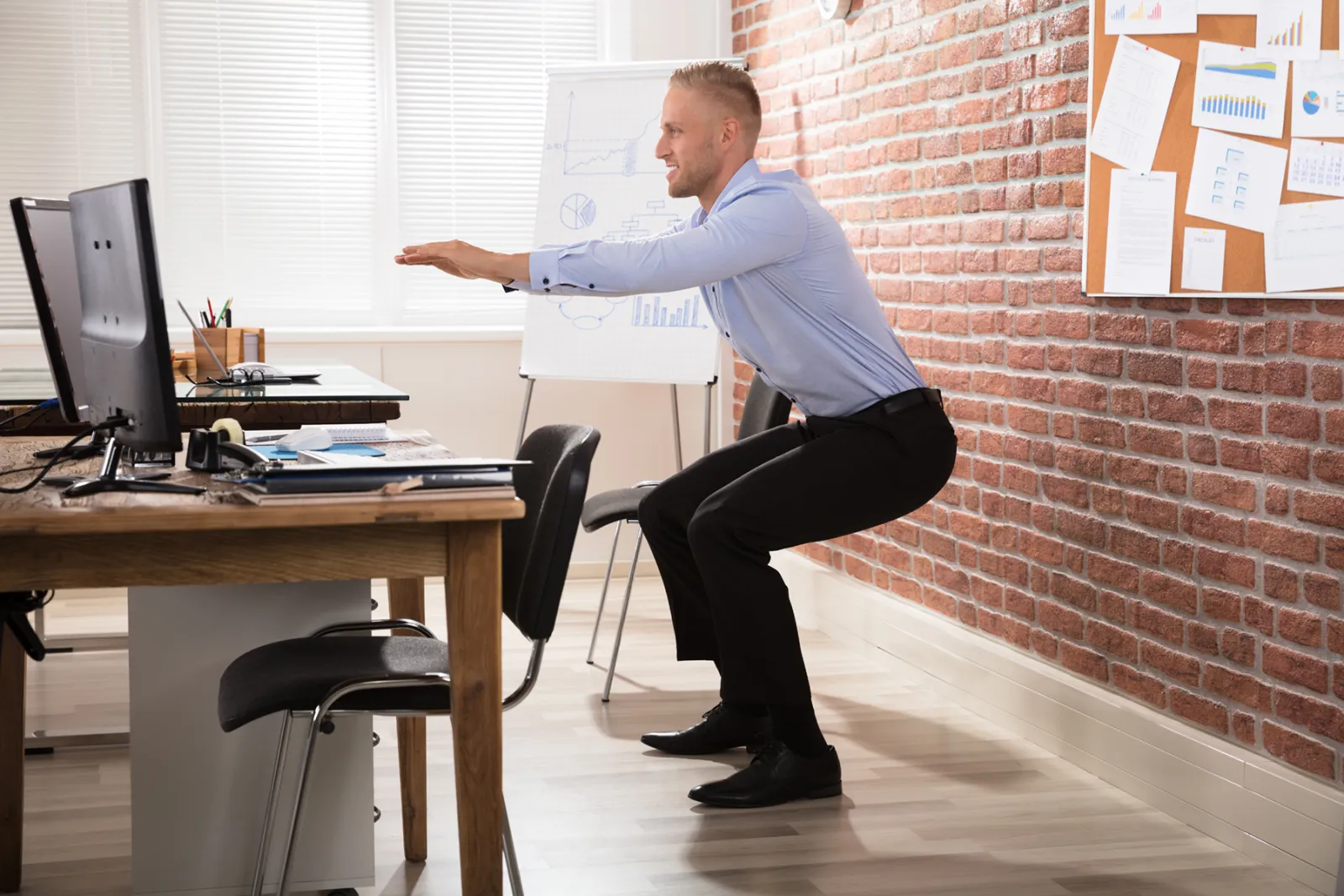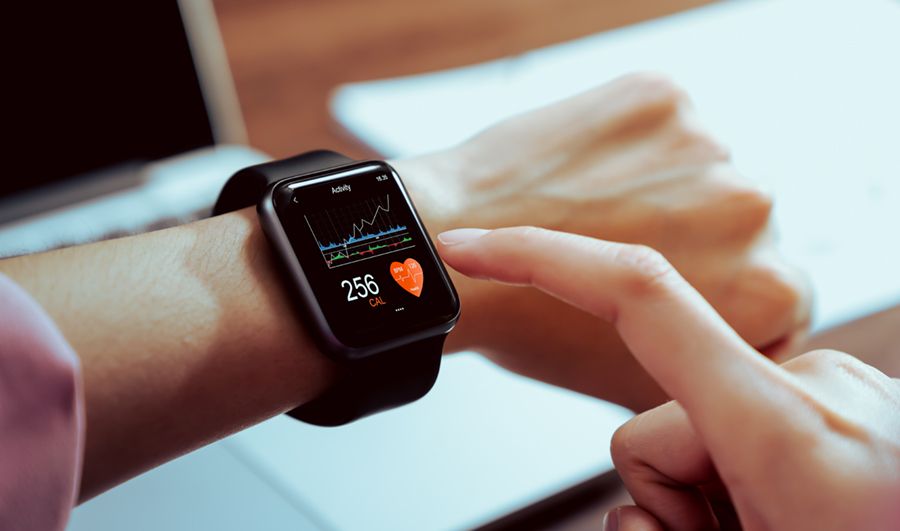Whether you work at home or in an office, people are spending a lot more time sitting at a desk or in front of a computer. What if you could actually work out at work?
While you shouldn't give up on your home or gym exercise routine, you can certainly increase your activity with exercises done at your desk. As a matter of fact, exercising just 15 minutes a day can increase your lifespan by as much as three years, according to a Harvard study published in December 2013.
Here are a few strength moves you can try while seated at your desk:

Upper Body:
Tricep Dips-Sit on the edge of a stationary (non-wheeled) chair, with both hands facing forward. Bend your elbows as you lower yourself down off the chair, keeping your knees at a right angle. Lower your body then straighten your arms without locking your elbows. Complete 20 dips.
Desk Push-Ups-First, make sure your desk is solid enough to support your weight. Stand and put your hands on the desk. Walk backwards, then with your body at an angle, drop your chest down and push away from the desk. Repeat 15 times. You can also perform push-ups against the wall or drop down to the floor for the classic military-style push-up.
Standing Arm Circles-while standing in front of your desk, raise your arms straight out to the side and circle clockwise for 20 times. Reverse the motion and circle the arms counterclockwise 20 times. Repeat at least 3 more times.
Try a Chair Lift to Work Your Chest and Shoulders-Place both hands on your chair arms and slowly lift your bottom off the chair. Lower yourself back down but stop short of the seat, hold for a few seconds. Do 15 times.
Lower Body Exercises:
Chair Squats-Using a stationary chair, stand in front with feet hip width apart. Then squat over the chair, sitting on your heels, barely sit on the chair, then lift your body to return to a standing position. Complete 20 reps.
Standing Rear Leg Lifts-Hold the edge of a desk or table lightly with one hand and lift one leg, pressing it back. Keep lifting the leg behind you, tightening the hamstring and buttocks for 30 times. Then switch legs and complete two sets on each leg.
Standing Lunges-Stand holding the edge of a desk or table for support, and step one leg back into a lunge. With your weight on your front leg, drop the back knee towards the floor and hold for 15 pulses, then switch legs. Make sure the front knee does not overextend the front foot.
Wall Sit-Take a seat against the wall with your knees at a 90-degree angle and feet planted directly in front of you. Then set a timer for 1 minute and hold your squat pressed against the wall. You can continue to add time (2 minutes or 3 minutes) for an extra challenge.

Core Exercises:
Seated Bicycles-While seated in your desk chair, scoot your bottom close to the edge of the seat, slightly lean back and position your hands behind your head. Lift one knee to the opposite elbow, twisting your body. Then return to the seated straight-back position. Make sure you are trying to do an abdominal crunch by bringing your opposite elbow to your knee. Complete 25 reps on each side (total 50 reps).
V-Ups-While seated in your desk chair, lean back and hold the sides of the chair as you lift your knees together to touch your chest.
If you have a break and can find an empty conference room or office, take a few minutes to shadow box or do some football drills like karaoke or jumping jacks. Instead of walking through the hallways, do walking lunges down the hall for lower body conditioning.

Staying active at your desk or incorporating exercise around the home/office will help increase blood flow and build strength. Other healthy options to keep you moving include sitting on an exercise ball instead of a chair. The exercise ball will strengthen your abs and back, while working on your posture. Use your phone to set an alarm as a reminder to stand up, stretch, and move around. You will feel more alert even if you just get up and take a deep breath. Also, track your steps by using your phone's activity monitor or Fitbit device. You want to strive for at least 6,000 to 10,000 steps per day.
Beyond your desk at the office, you can exercise in between clients or meetings by running the stairs rather than using the elevator. For a more difficult cardiovascular workout, try to do two steps at a time. But most importantly, remember that any physical exercise is better than none. Even while you are at work, short bouts of exercise throughout the day will help you burn more calories and reduce stress.

